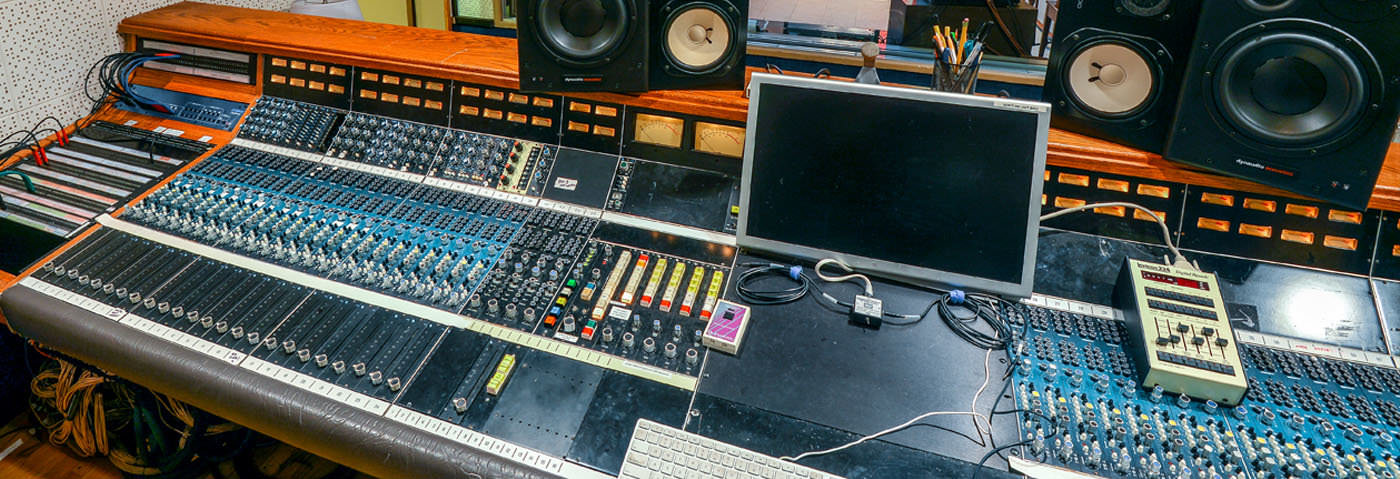In the latest Hardware Focus, we take a look at one of just two late-70s 48-channel API split consoles still in existence.
Boulevard Recordings’ very special API 3288 console is an all-American classic. It’s a great all-rounder for processing individual tracks through the channel strips, printing stems, analogue summing and transformer colouration. It can produce a wide range of sonic output from soft and mellow to gritty and punchy, and it’s extremely useful for widening a mix and wrapping your project in its analogue goodness. You can try it out on The Audio Hunt here.
Talking to Clay, chief engineer and proud studio owner, the story opens with motifs of vintage beauty. Thinking about the console, he mentions: “Well, it’s mid 1970s, all-American discrete love. It’s a vintage API, a true piece of history. Ours is a very special API. Other than RAK in the UK, [and despite its model number] ours is the only known 48-channel split console from that era of API. It was at ABC in New York City, where it was used for broadcast purposes, so it has an extra set of Jensen transformers on each channel.”
Basic theory says the more layers of transformers, the more colouration possibilities, but because this is a console and not a standalone rack unit, it offers the option of going through any combination of Jensen transformers depending on the effect you’re looking to achieve. Clay adds: “First you could just run through the line amps of the individual channels and back out. That gives you the basic channel strip of the API with 2520 op amps and two Jensen transformers. The next option is to also sum through the master bus with the channel engaged. That hits another pair of 2520 op amps and another pair of Jensen transformers. If you wanted to go even more colourful we can bus your tracks in addition to the master bus and channel strip. This gives you another pair of 2520 op amps and transformers. Or we can try all three together to give you all the options!”
With regards to electronic music, the possibilities are endless and Clay provides a brilliant account on some of the desk’s uses: “A lot of electronic music is made up of samples, homemade loops and FX. Working in the box is convenient, but being able to widen a mix or tonally alter it gives the track a unique character which is what analogue consoles like the API are known for. They’re tone monsters. They can do subtle and not subtle at all.”
As mentioned, colouration can be achieved by driving the input transformers; if pushed hard enough the outcome is a very pleasing and organic sounding distortion. “The API is discrete, meaning there are no microchips, and all of the components are hand-soldered discrete components. So when we overdrive a channel you get varying degrees of beautiful 1970s American analogue console distortion. We sometimes recommend this as an add on to your tracks.”
As an alternative approach, Clay suggests passing single elements through the console whilst heavily distorting them and then mixing those wet tracks in to taste. Similar to how parallel compression works, this will add interest and most certainly grit to those elements you wish to supercharge in the mix. Another interesting comment Clay concerns summing the mix through the desk – “When you get things out on the board, they are taken out of the pan limits of the DAW. People usually notice a widening effect when they have run all of their tracks through the console.”
Both Clay and the team at Boulevard highly recommend trying this vintage desk on your own tracks. As Clay himself adds: “Anyone wanting to get more out of what they have at home should try printing through the API. It’s going to give you something that no plugin or sample can. If you’re really into what you do and care about detail and sonic quality, this is going to up your game. You will notice a difference. Samples are sterile on their own; an analogue console is able to give you something more. It tonally shapes everything in a unique way.”
One hour of Boulevard’s time spent on your tracks with the API 3288 will cost $75, but the results will most certainly not disappoint. As an added bonus, this console lives in the recording studio where Pink Floyd finished The Wall. It was not part of that record, but after its broadcast days at ABC it was used on a few Deep Purple records. So apart from a fabulous piece of analogue goodness, a world-class recording facility and high-calibre engineers, you also get to print a piece of recording history on your tracks. Try it out here.
